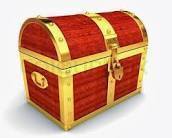San Marino

Basic Country Data:
Country ISO Code: SM
Official Language: Italian
Language ISO Code: it
Current Official Currency: Euro
Current Currency ISO Code: EUR
Currency: Euro (EUR)
ISO Code: EUR
Designs / Symbols on Coins and Banknotes:
-
San Marino’s euro coins feature unique national designs, including:
-
2 euro coin: first series depicting the Palazzo Pubblico (government seat), second series featuring a portrait of Saint Marinus based on a painting by Giovan Battista Urbinelli.
-
1 euro coin: first series with the official coat of arms of the Republic, second series with the image of the Second Tower.
-
50 cent coins: first series showing the three towers of San Marino (Guaita, Cesta, and Montale), second series with a portrait of Saint Marinus from a painting by Emilio Retrosi.
-
20 cent coins: first series with the effigy of Saint Marinus inspired by a painting from the Guercino school, second series depicting Mount Titano and the three towers.
-
10 cent coins: first series showing the Basilica of San Marino, second series depicting the Church of San Francesco.
-
5, 2, and 1 cent coins: first series featuring the Third Tower (Montale), the Statue of Liberty, and the First Tower (Guaita); second series with the official coat of arms, city gate, and the Church of San Quirino.
Singular Name: euro
Plural Name: euro
Monetary Subdivision: 1 euro = 100 cents
Subdivision Name Singular: cent
Subdivision Name Plural: cents
Initial Production Date: 1999 (electronic), 2002 (physical)
Final Production Date: ongoing
Initial Circulation Date: January 1, 2002
Final Circulation Date: currently in circulation
Mint: Coins produced at Eurozone mints with San Marino national designs
Issuing Bank: European Central Bank and Eurozone monetary authorities
Coin Denominations: 1, 2, 5, 10, 20, 50 cents; 1 and 2 euros
Banknote Denominations: 5, 10, 20, 50, 100, 200, 500 euros (500 euro note no longer issued since 2019)
Economic Historical Context:
-
-
San Marino adopted the euro in 2002 despite not being a member of the European Union.
-
San Marino’s coins are recognized and circulate throughout the Eurozone, often featuring commemorative and historical designs.
-
The economy of San Marino heavily relies on tourism, banking, and artisanal products.
Current Circulation Status: active and widely used in San Marino
Issuing Authority: European Central Bank and Eurozone authorities
Relevant Monetary Legislation: European Union and Eurozone regulations
Historical Currencies of San Marino
Sammarinese Lira
-
ISO Code: unofficial (linked to the Italian lira)
-
Designs / Symbols: coins and banknotes similar to Italian currency, with some specific issues for San Marino.
-
Singular Name: lira
-
Plural Name: lire
-
Monetary Subdivision: 1 lira = 100 cents
-
Initial Production Date: late 19th century (official issues from 1864)
-
Final Production Date: 2001 (replaced by the euro)
-
Initial Circulation Date: late 19th century
-
Final Circulation Date: 2002
-
Mint: coins struck in Italy (Rome Mint and others)
-
Issuing Bank: various Italian and Sammarinese banks
-
Coin Denominations: 1, 2, 5, 10, 20, 50 cents; 1, 2, 5, 10 lire
-
Banknote Denominations: mainly Italian lire in use
-
Economic Historical Context: San Marino used the Italian lira with limited own issues until euro adoption in 2002.
-
Circulation Status: out of circulation since 2002
Sammarinese Escudo (Commemorative Issues)
-
Some numismatic issues in gold and silver, such as the 1 escudo gold coin of 1975, were produced for collectors.
-
These were not circulating currencies.
Curiosities and Commemorative Coins
-
San Marino is renowned for its euro commemorative coins celebrating historical events, culture, and notable Sammarinese personalities.
-
Mintages are often limited, making these coins highly sought after by collectors.
-
San Marino’s coins rank among the rarest and most valuable issued in the Eurozone.
This report presents Italian as the official language of San Marino and provides a comprehensive financial history of the country, including the historical Sammarinese lira and the euro currently in circulation, with details on designs, production, economic context, issuing authorities, and numismatic curiosities.
 Nilton Romani
Nilton Romani
